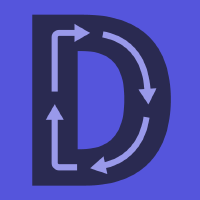Topic Editors




Recent Trends in Nonlinear, Chaotic and Complex Systems
Topic Information
Dear Colleagues,
We live in a world dominated by nonlinearities, which play an important role in many natural phenomena. Furthermore, chaos is a common phenomenon in nature and exists in various nonlinear systems. Theoretical research on chaos has lasted for almost five decades. Various definitions and properties, theoretical bases and frameworks, correlations with fractals, and test methods of chaos have been presented and examined.
Therefore, the theoretical concept of chaos helps us to examine phenomena and behaviors not only in physical, chemical, and biological systems, but also in economic and sociological models. At the same time, chaos has also been used in many practical and useful applications, such as in cryptography, secure communications, optimization algorithms, and robotics. Furthermore, with the development of nonlinear dynamics, chaotic phenomena have been found in recent nonlinear systems, such as fractional differential systems, fractional discrete systems, time delays systems, and discontinuous dynamical systems. Especially in the last three decades, complex dynamics, including chaos, bifurcation, and other mechanisms, have also been found in these new systems. Nonlinear systems, bifurcation, chaos, and fractals are intertwined, which constitute several major topics in the study of nonlinear dynamics.
In this sense, research in this topic should contribute to presenting recent trends in theory, analysis, numerical simulation, and experimental realization, promising new results and novel practical applications on various topics of current interest on chaos and the related field of nonlinear dynamics, as well as on complex systems.
Dr. Christos Volos
Dr. Karthikeyan Rajagopal
Dr. Sajad Jafari
Dr. Jacques Kengne
Dr. Jesus M. Munoz-Pacheco
Topic Editors
Keywords
- chaos theory
- nonlinear classical and fractional systems and their applications
- nonlinear electronic circuits
- synchronization and chaos control
- complex systems
- biological and (bio)medical complexity
- neurodynamics and brain dynamics
- economic and social dynamics and complexity
- data-driven dynamical systems
- time delay systems
Participating Journals
| Journal Name | Impact Factor | CiteScore | Launched Year | First Decision (median) | APC | |
|---|---|---|---|---|---|---|

Entropy
|
2.7 | 4.7 | 1999 | 20.8 Days | CHF 2600 | Submit |

Fractal and Fractional
|
5.4 | 3.6 | 2017 | 18.9 Days | CHF 2700 | Submit |

Dynamics
|
- | - | 2021 | 12.7 Days | CHF 1000 | Submit |

Symmetry
|
2.7 | 4.9 | 2009 | 16.2 Days | CHF 2400 | Submit |

Algorithms
|
2.3 | 3.7 | 2008 | 15 Days | CHF 1600 | Submit |

MDPI Topics is cooperating with Preprints.org and has built a direct connection between MDPI journals and Preprints.org. Authors are encouraged to enjoy the benefits by posting a preprint at Preprints.org prior to publication:
- Immediately share your ideas ahead of publication and establish your research priority;
- Protect your idea from being stolen with this time-stamped preprint article;
- Enhance the exposure and impact of your research;
- Receive feedback from your peers in advance;
- Have it indexed in Web of Science (Preprint Citation Index), Google Scholar, Crossref, SHARE, PrePubMed, Scilit and Europe PMC.

